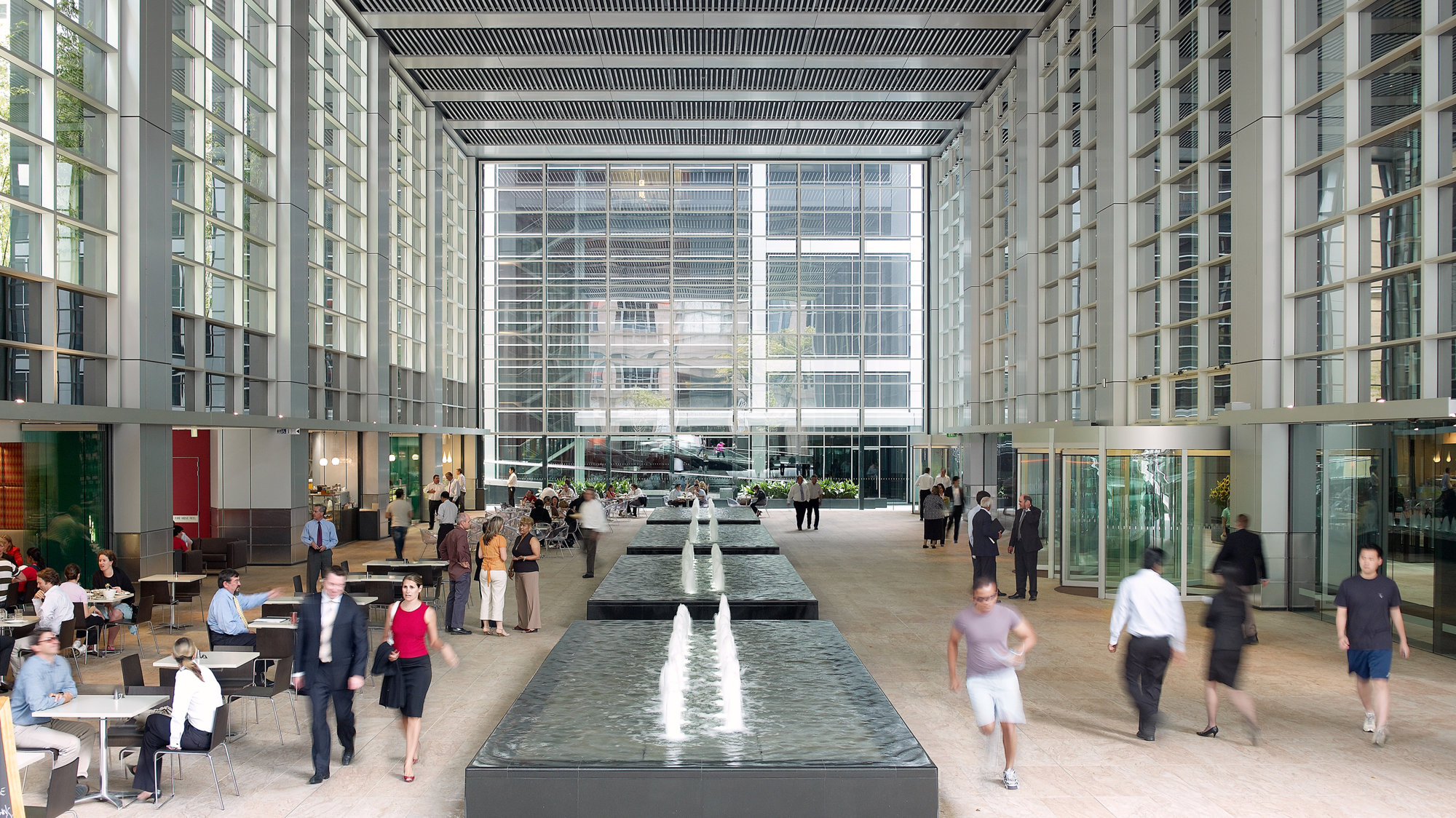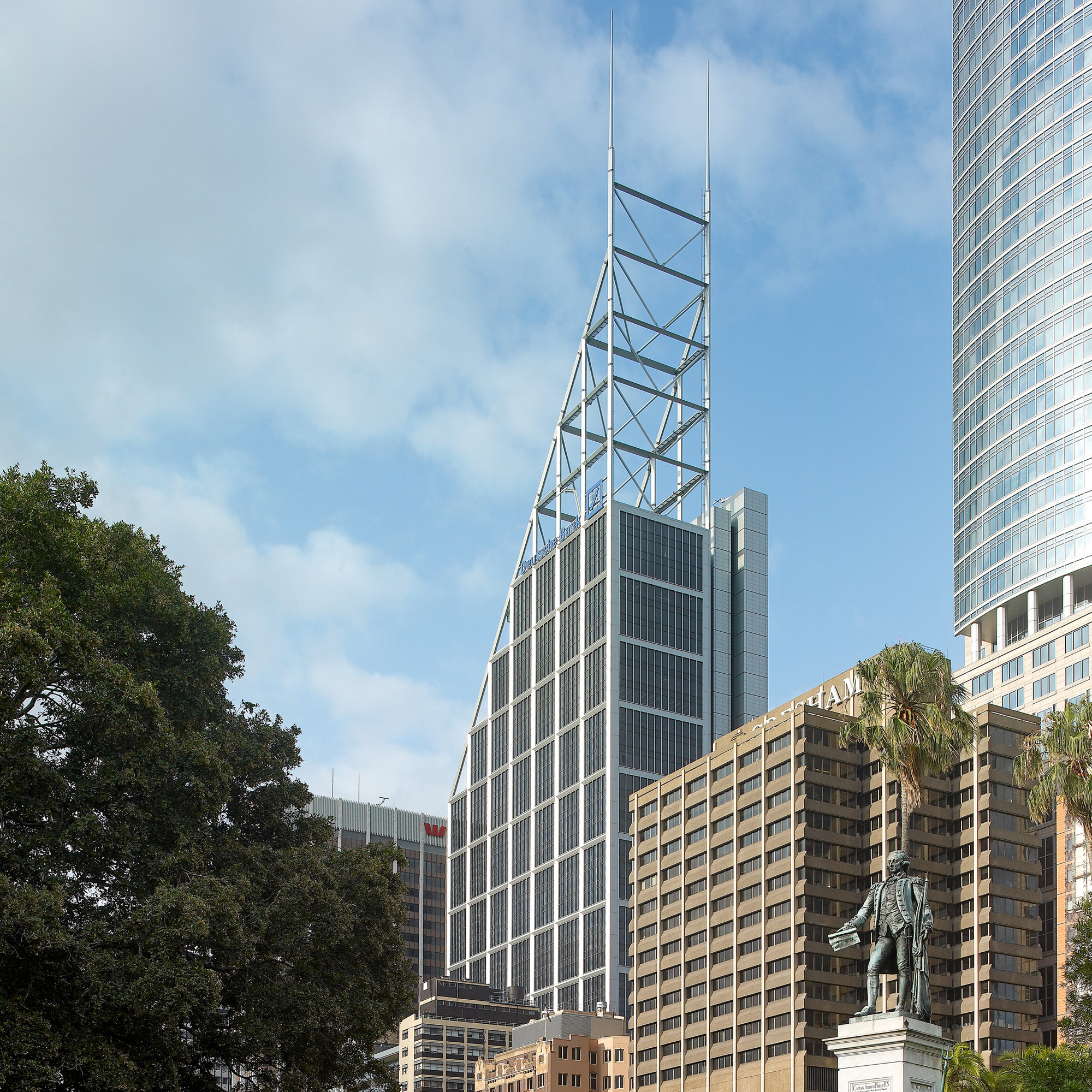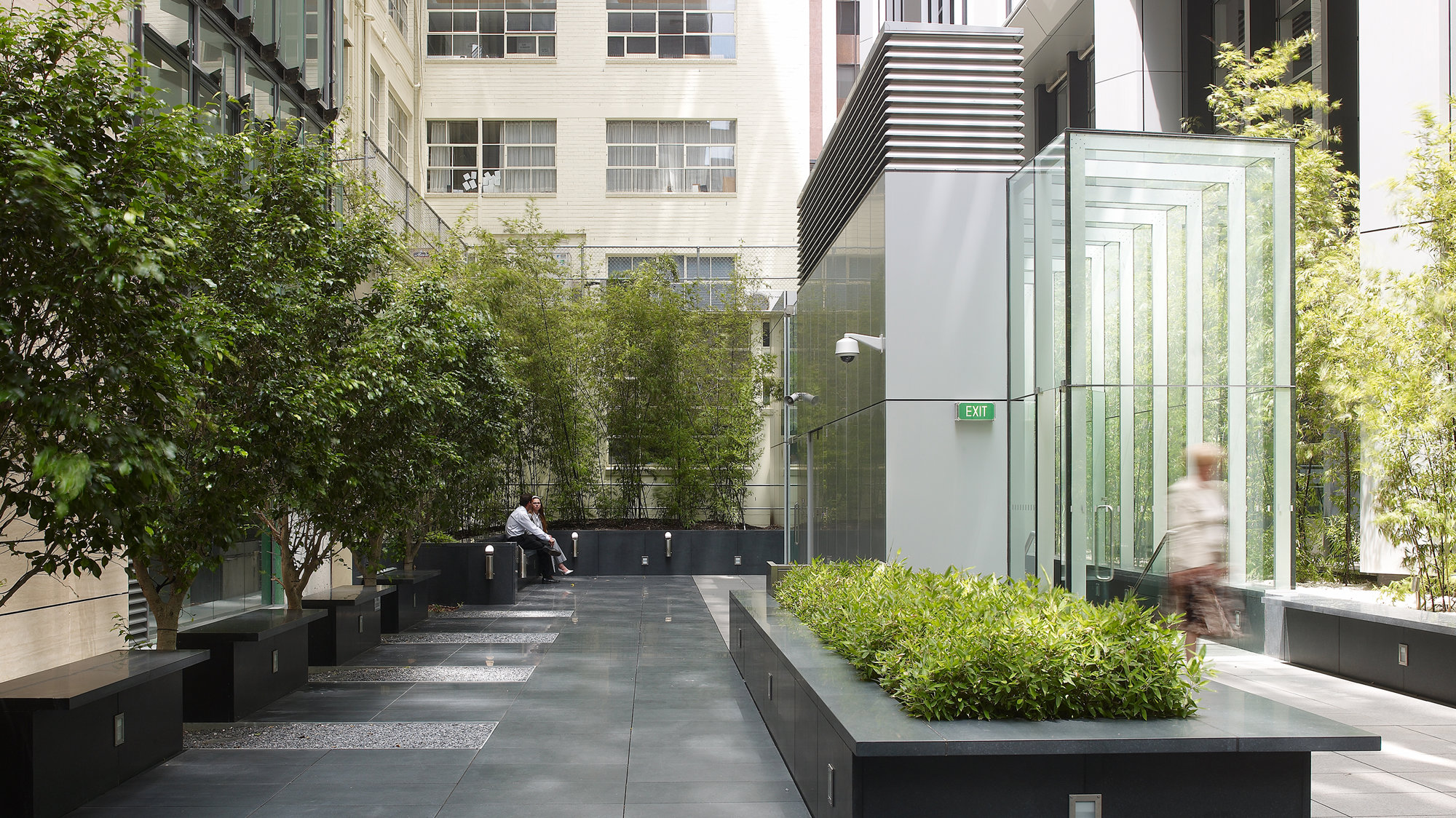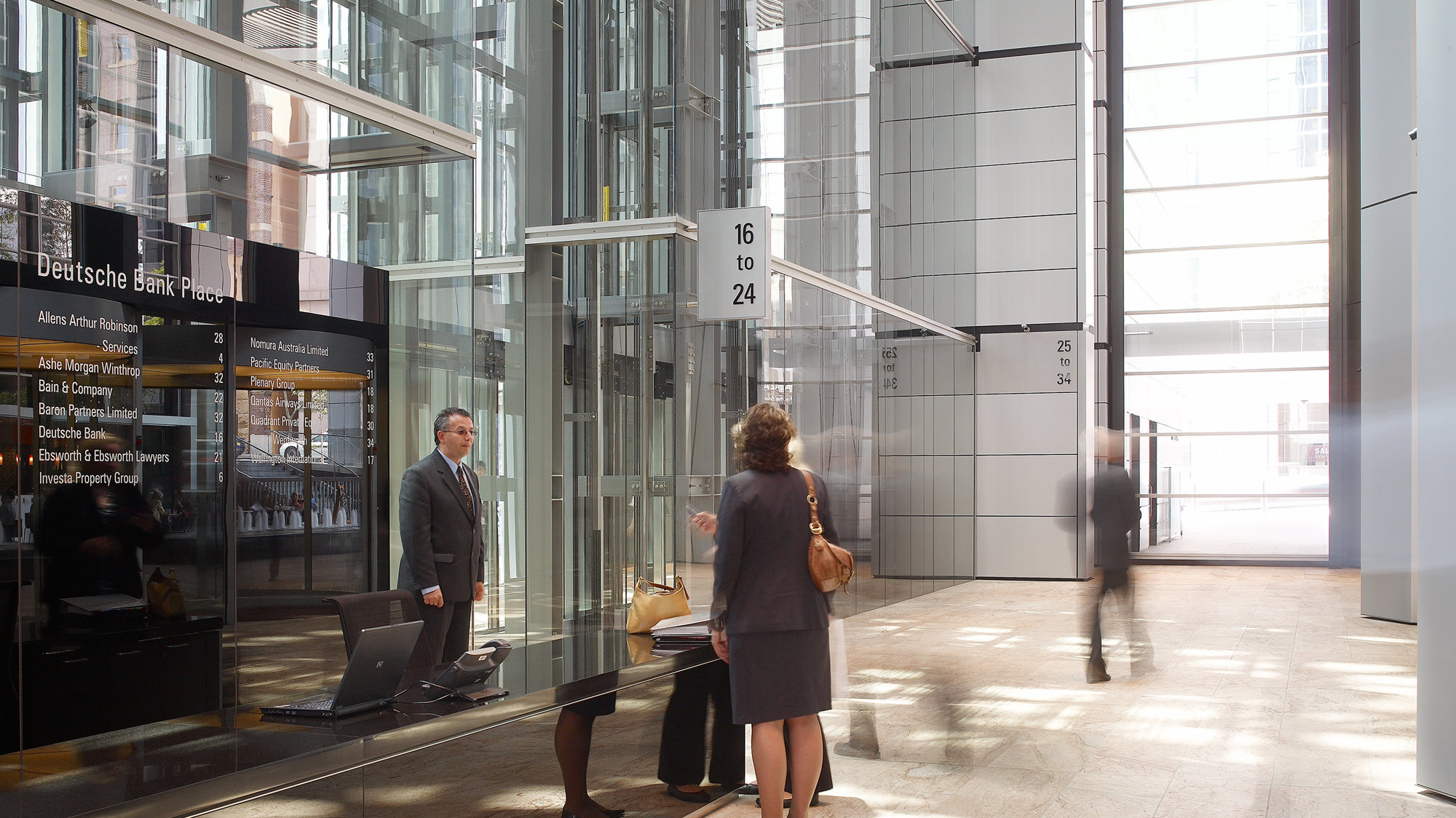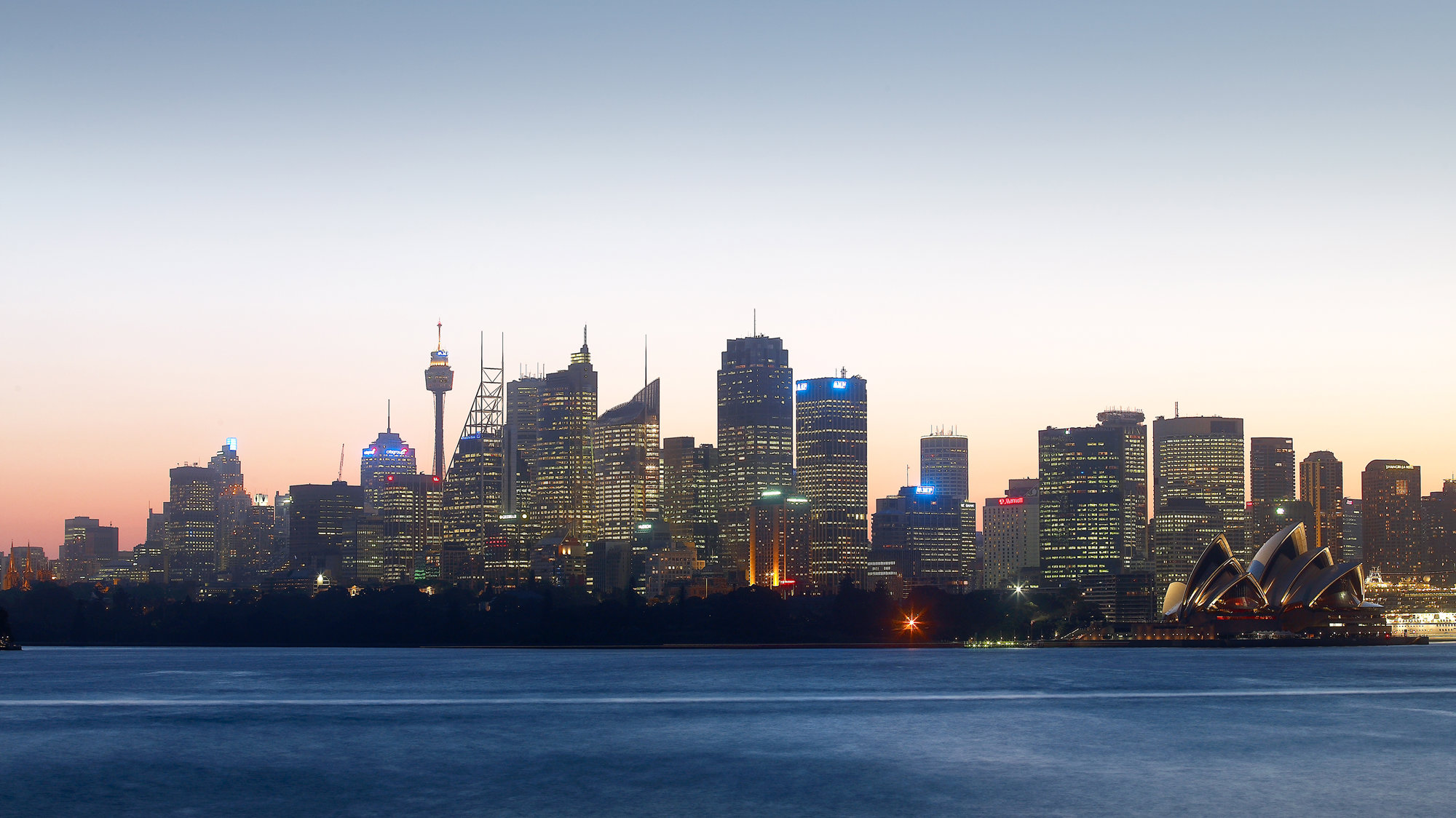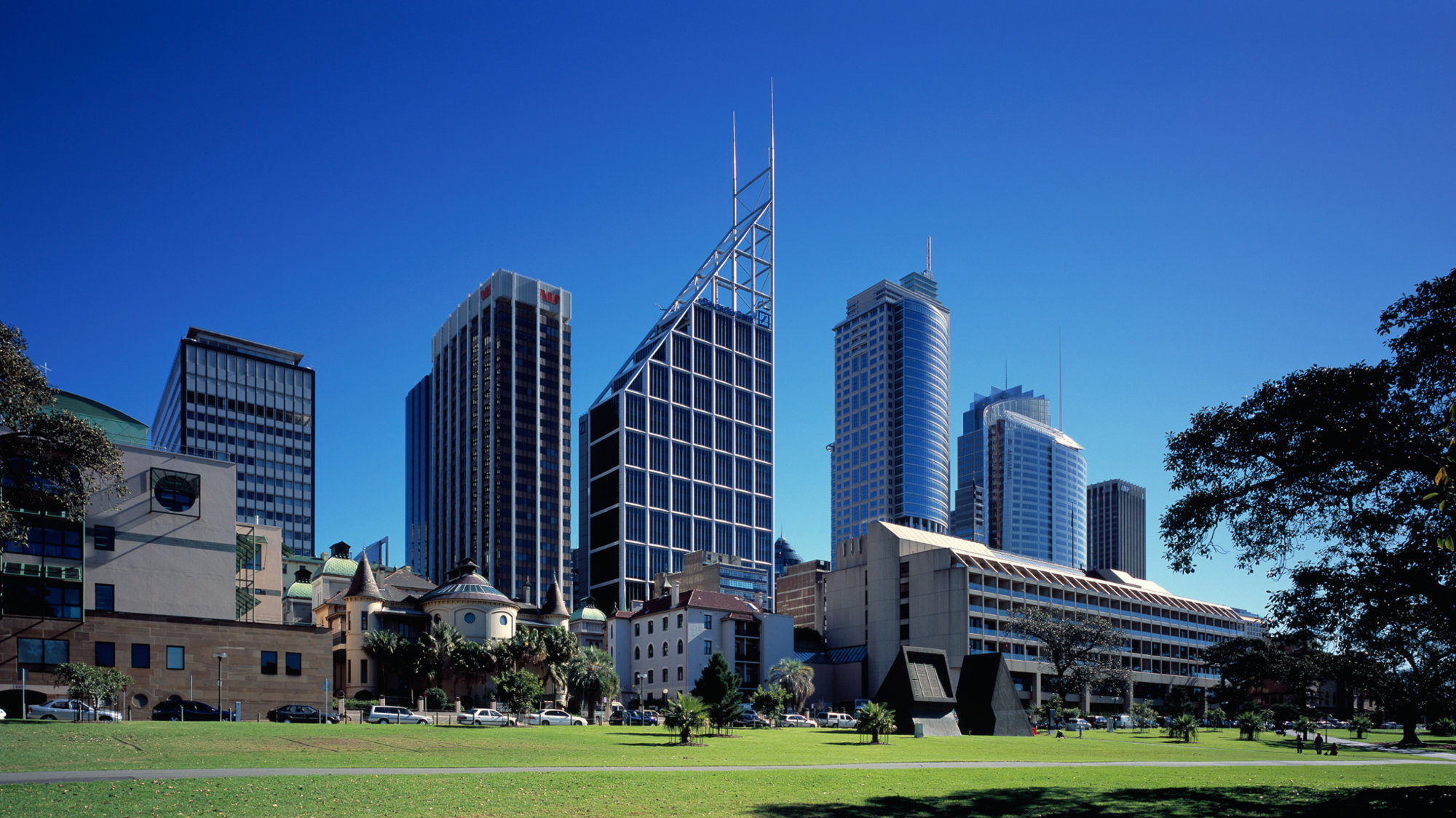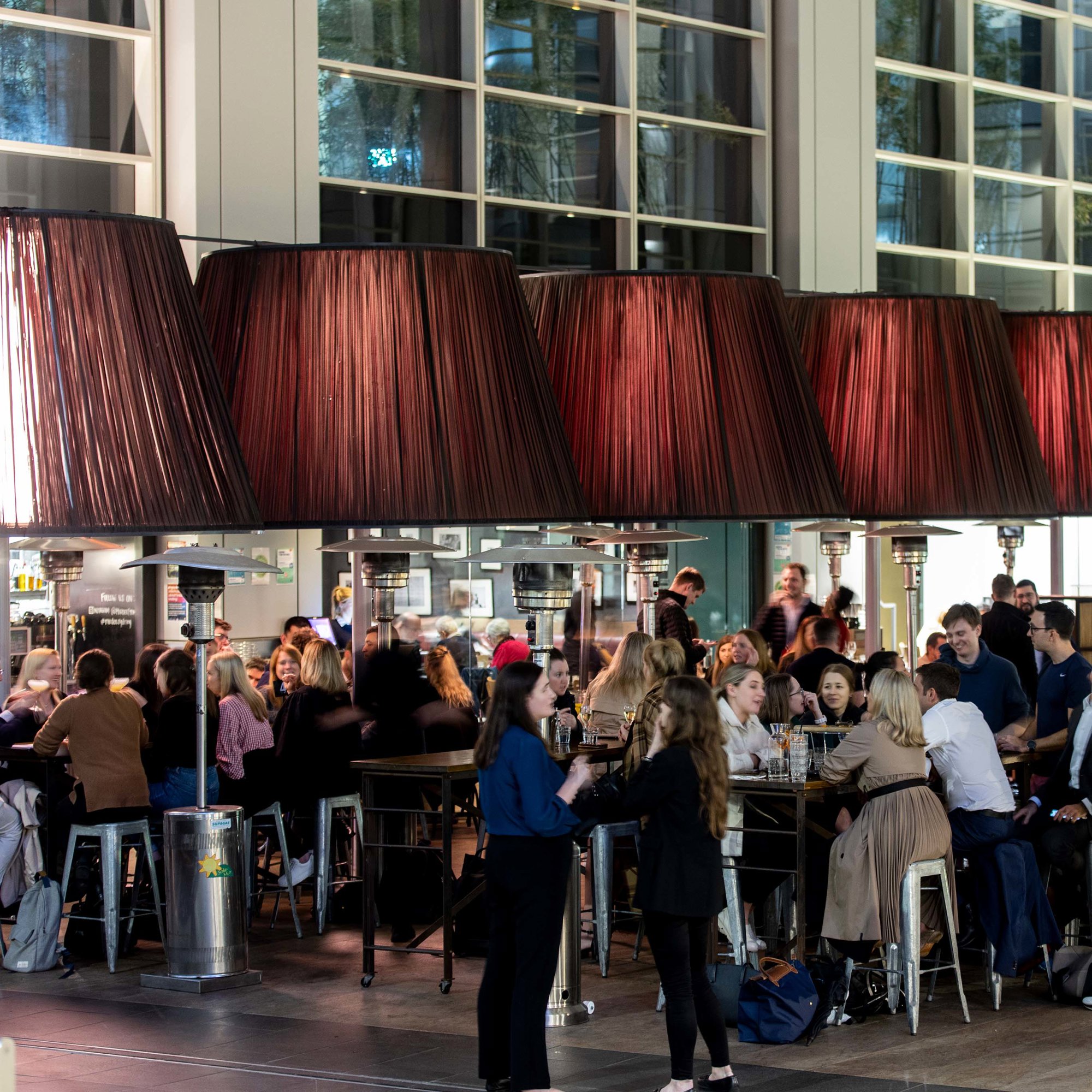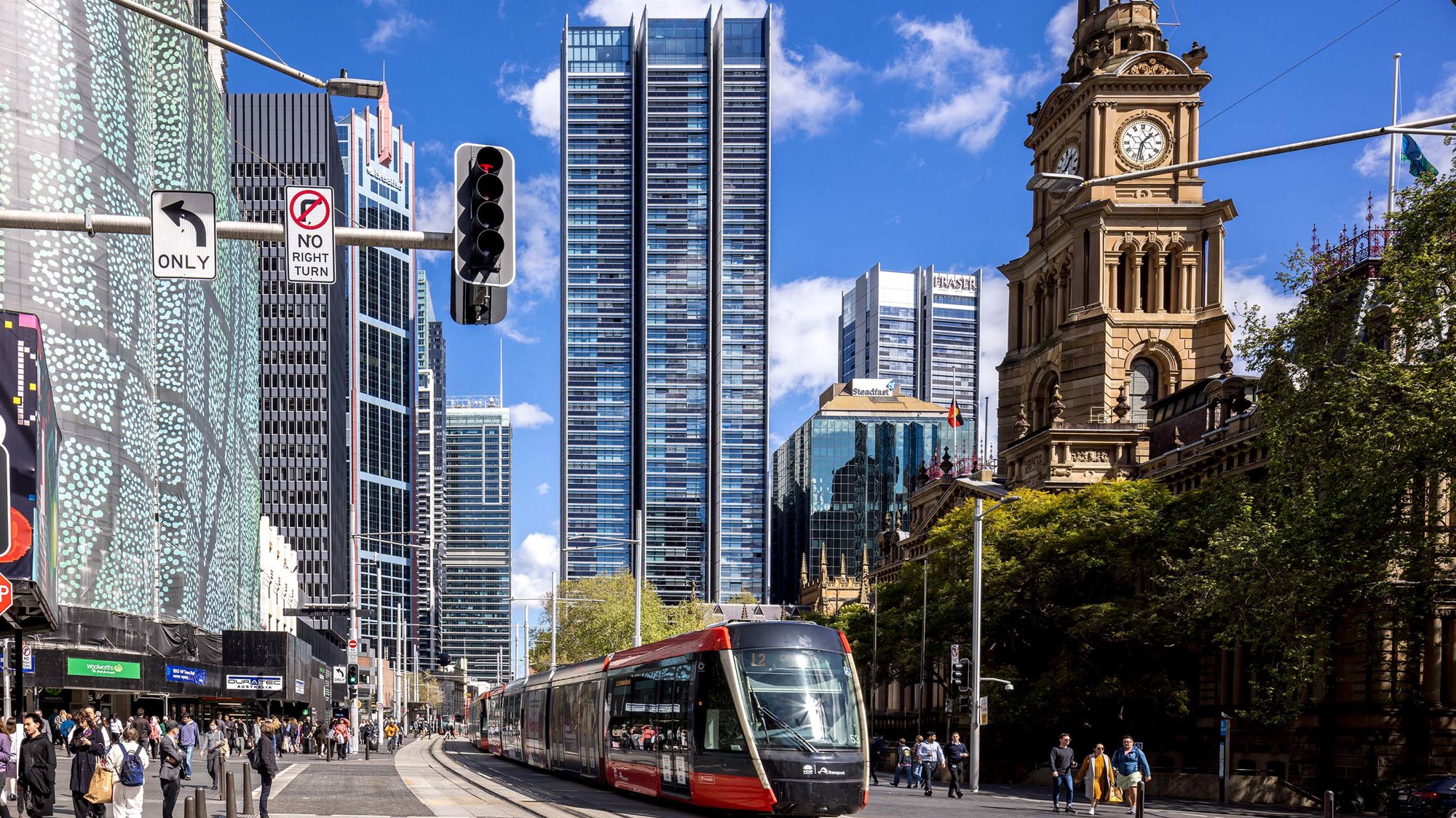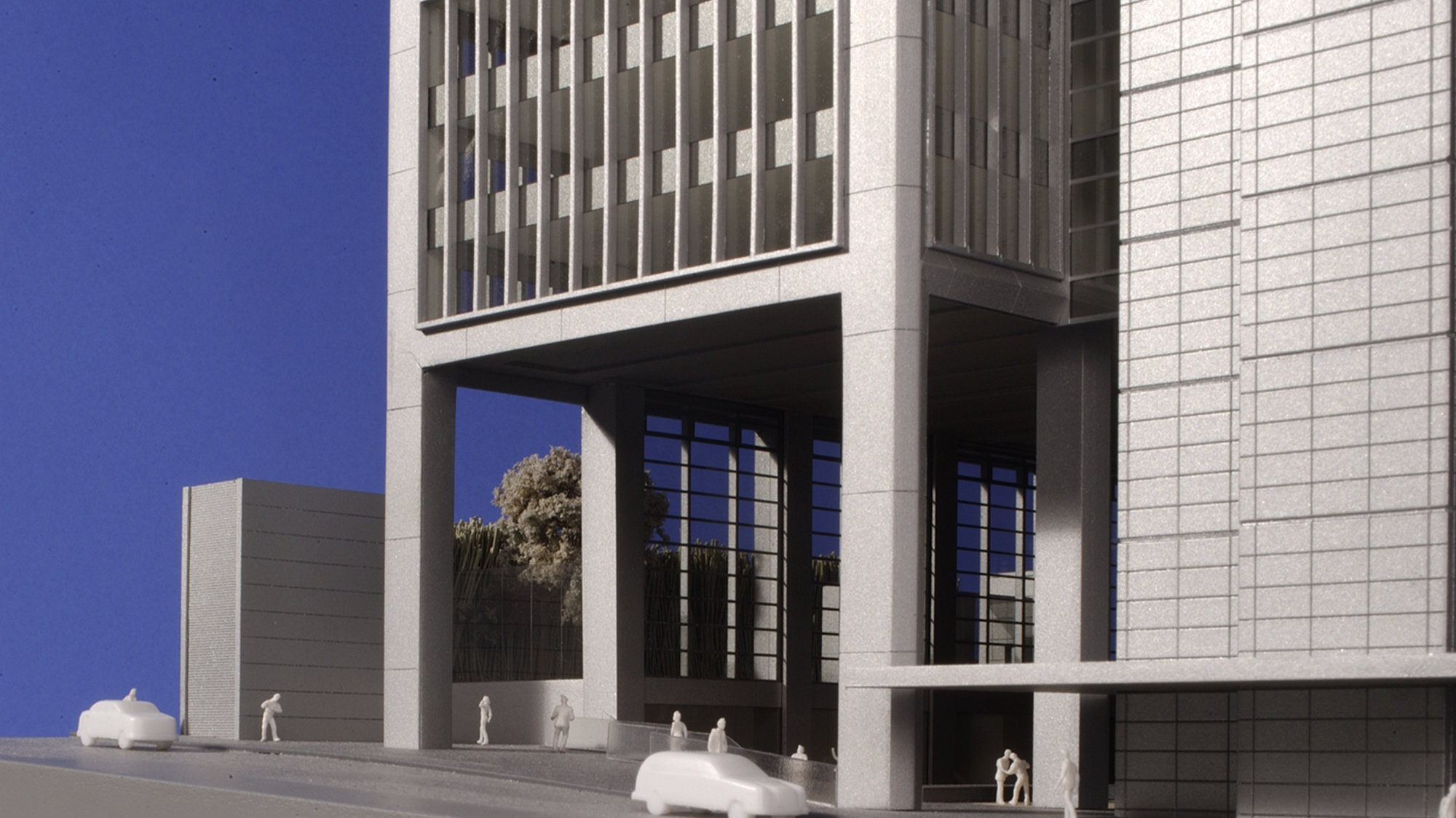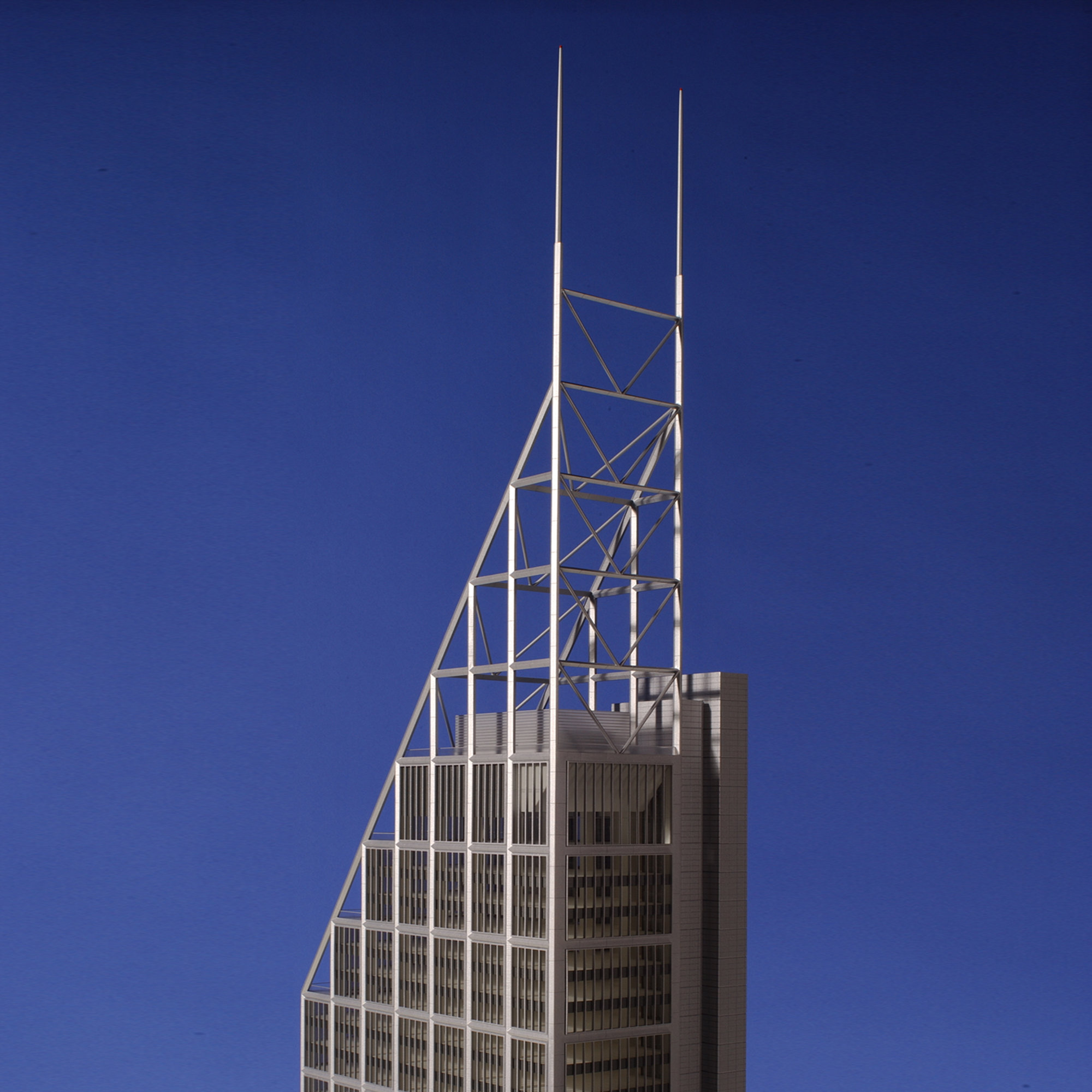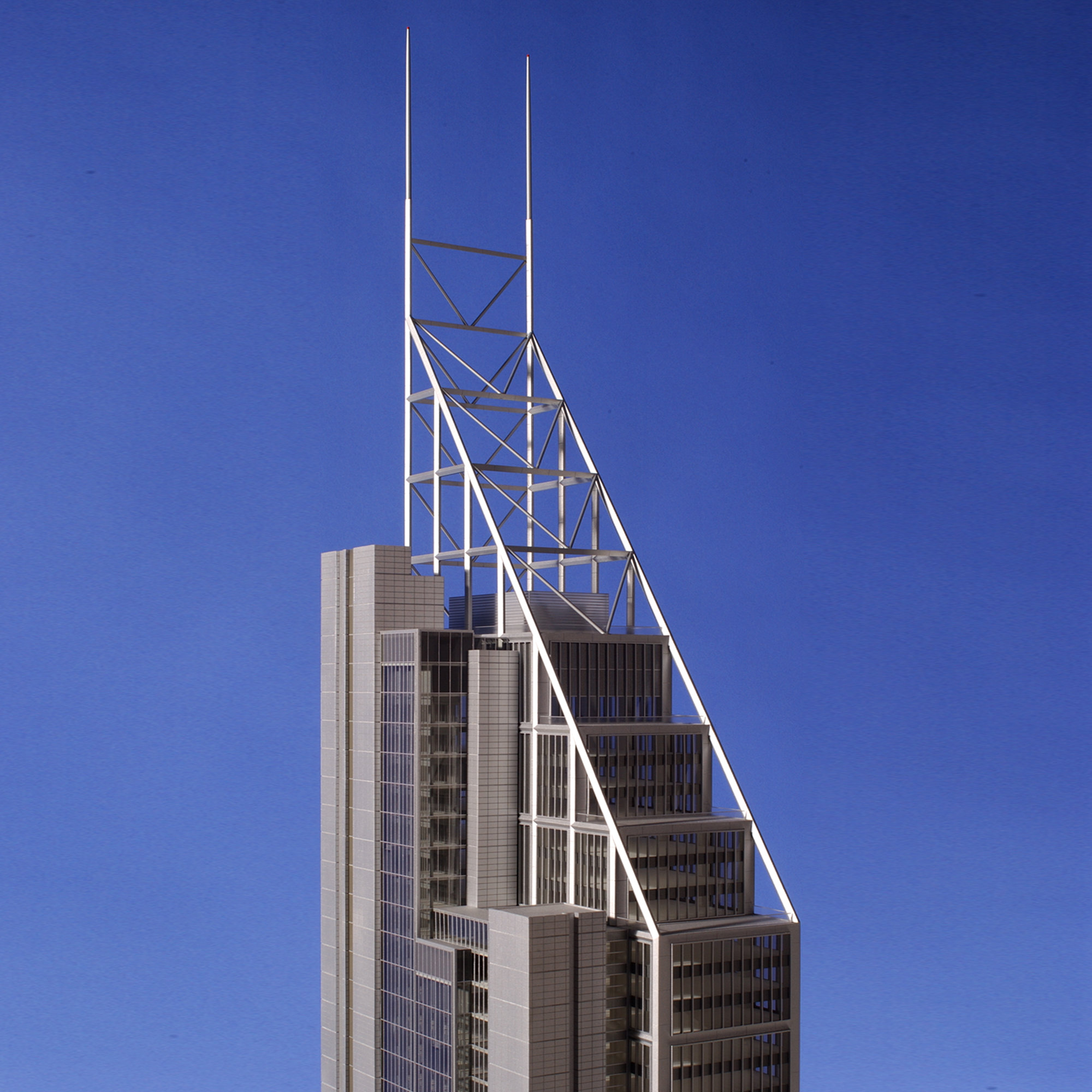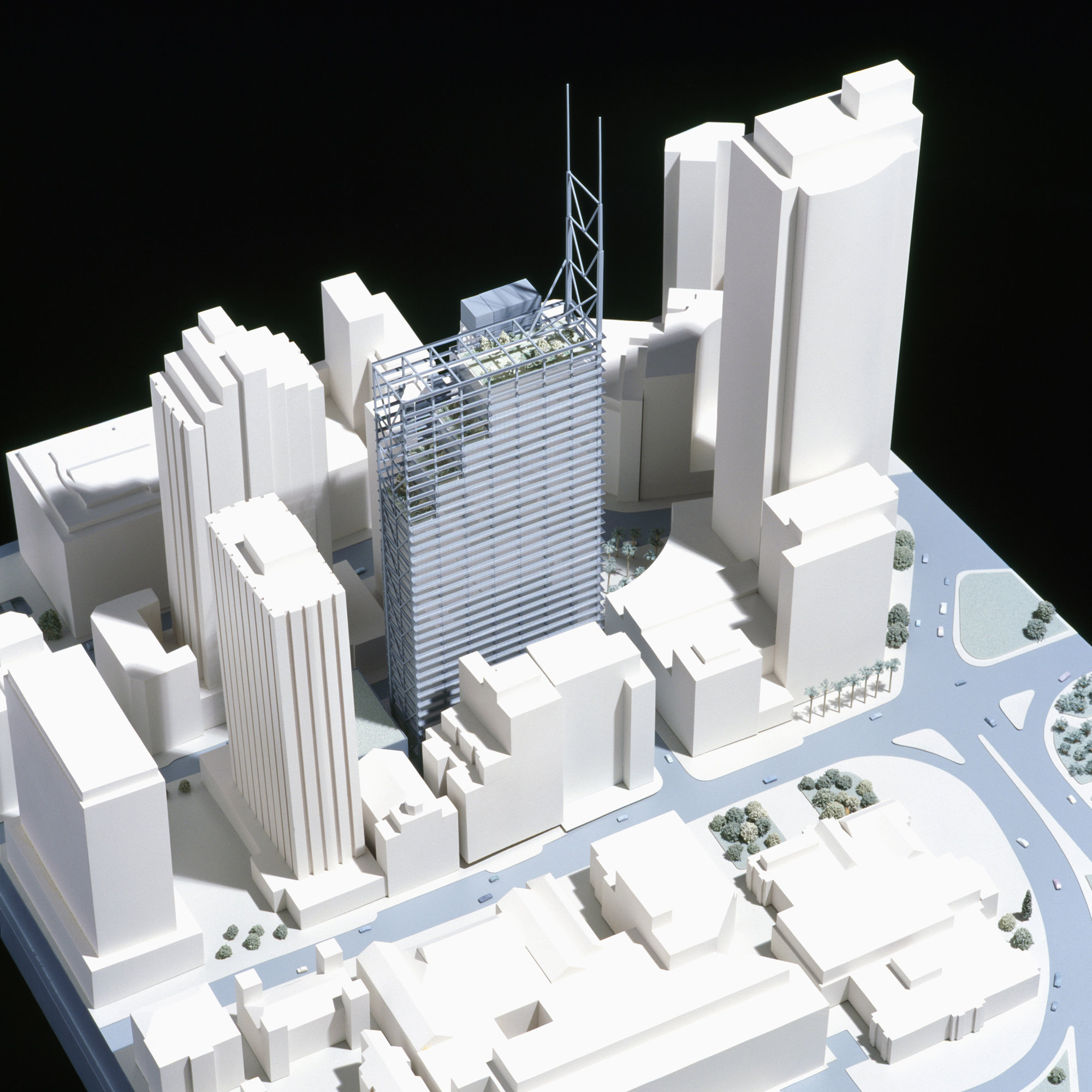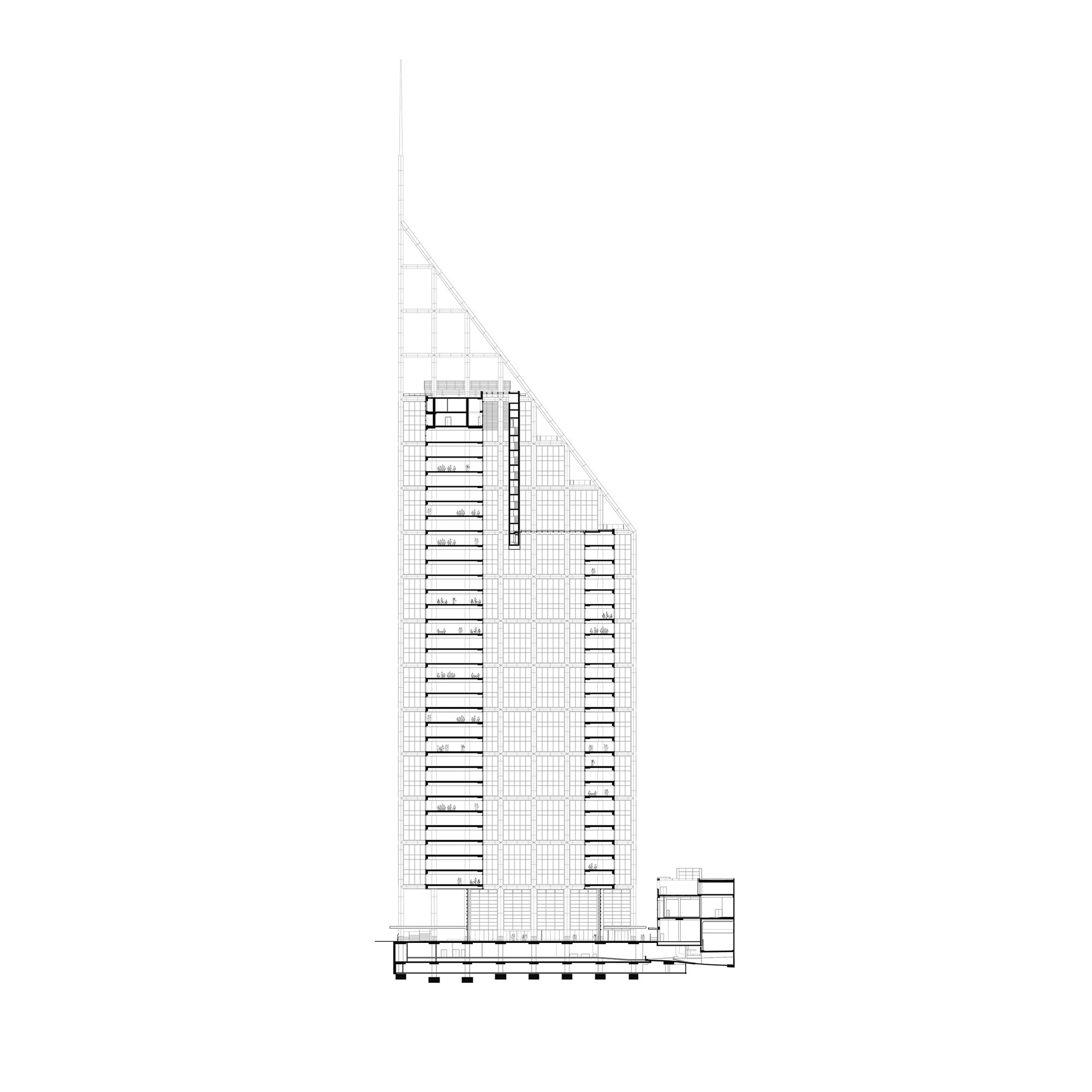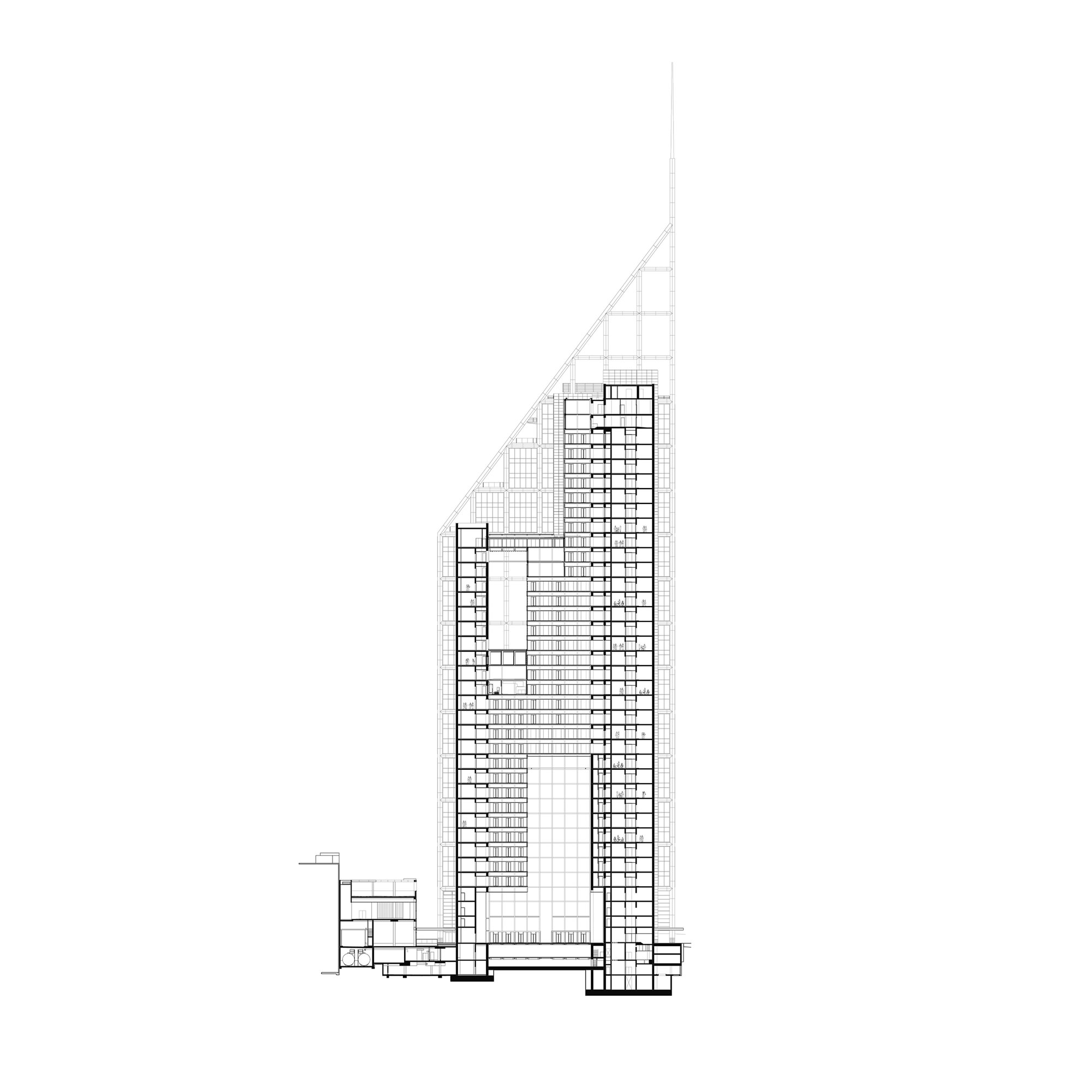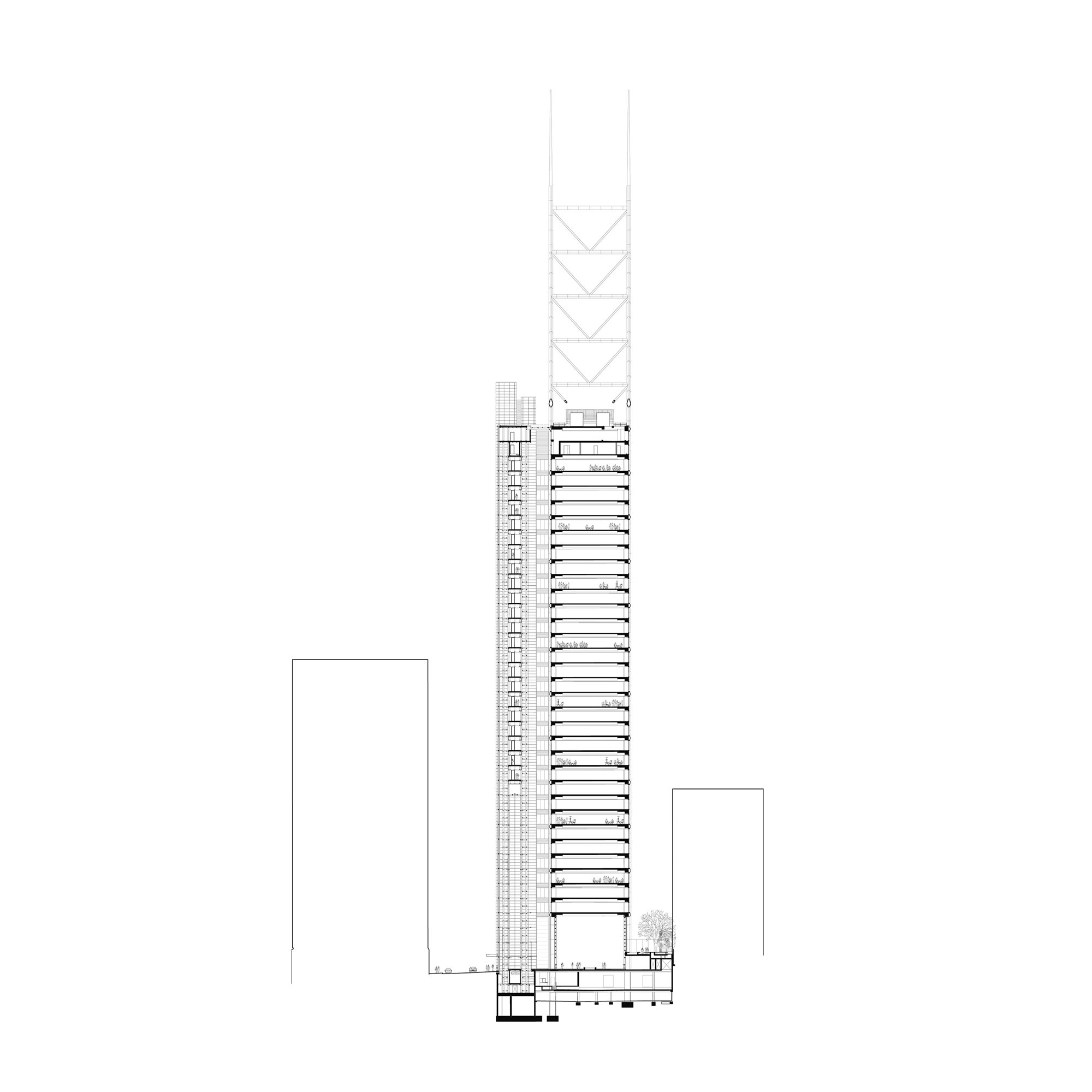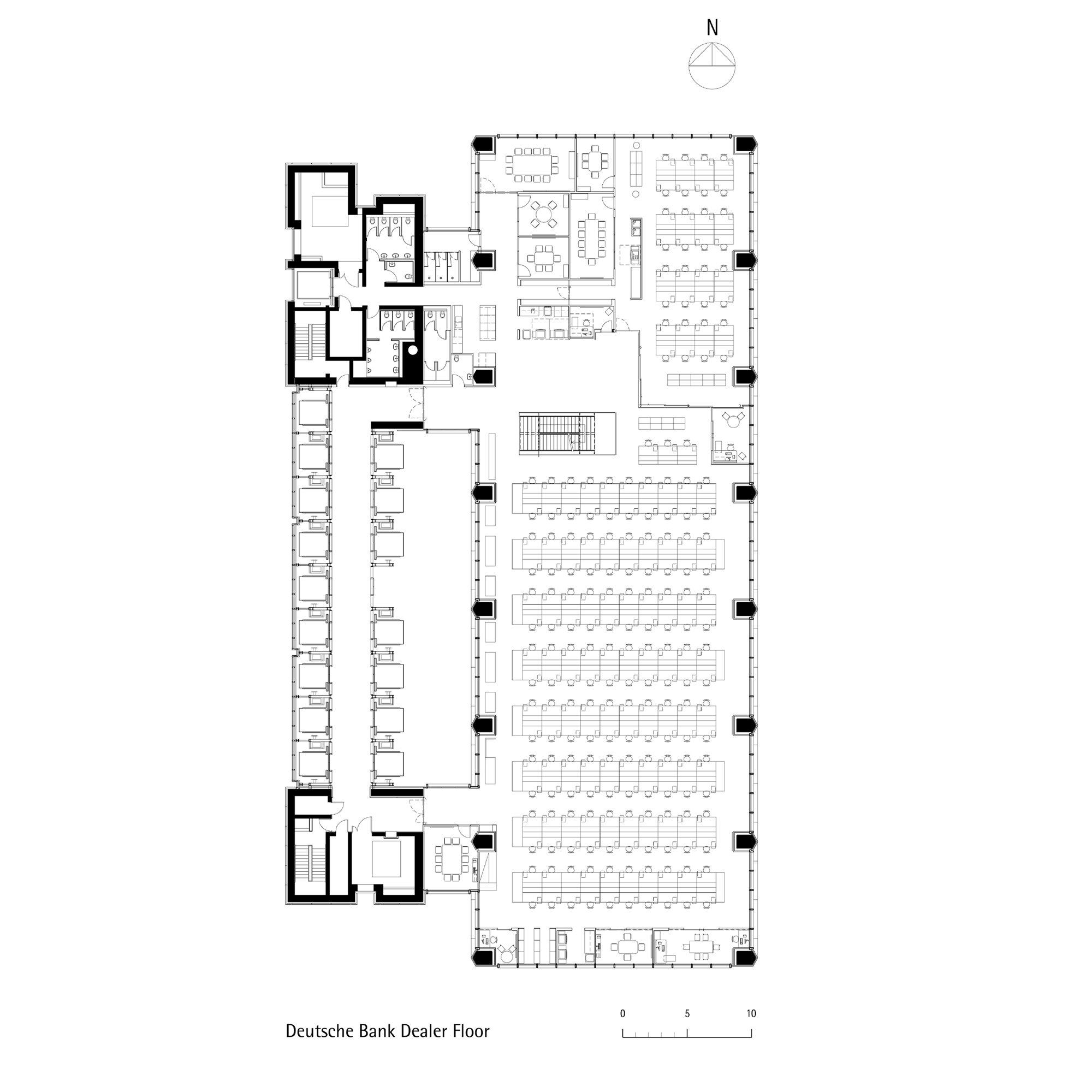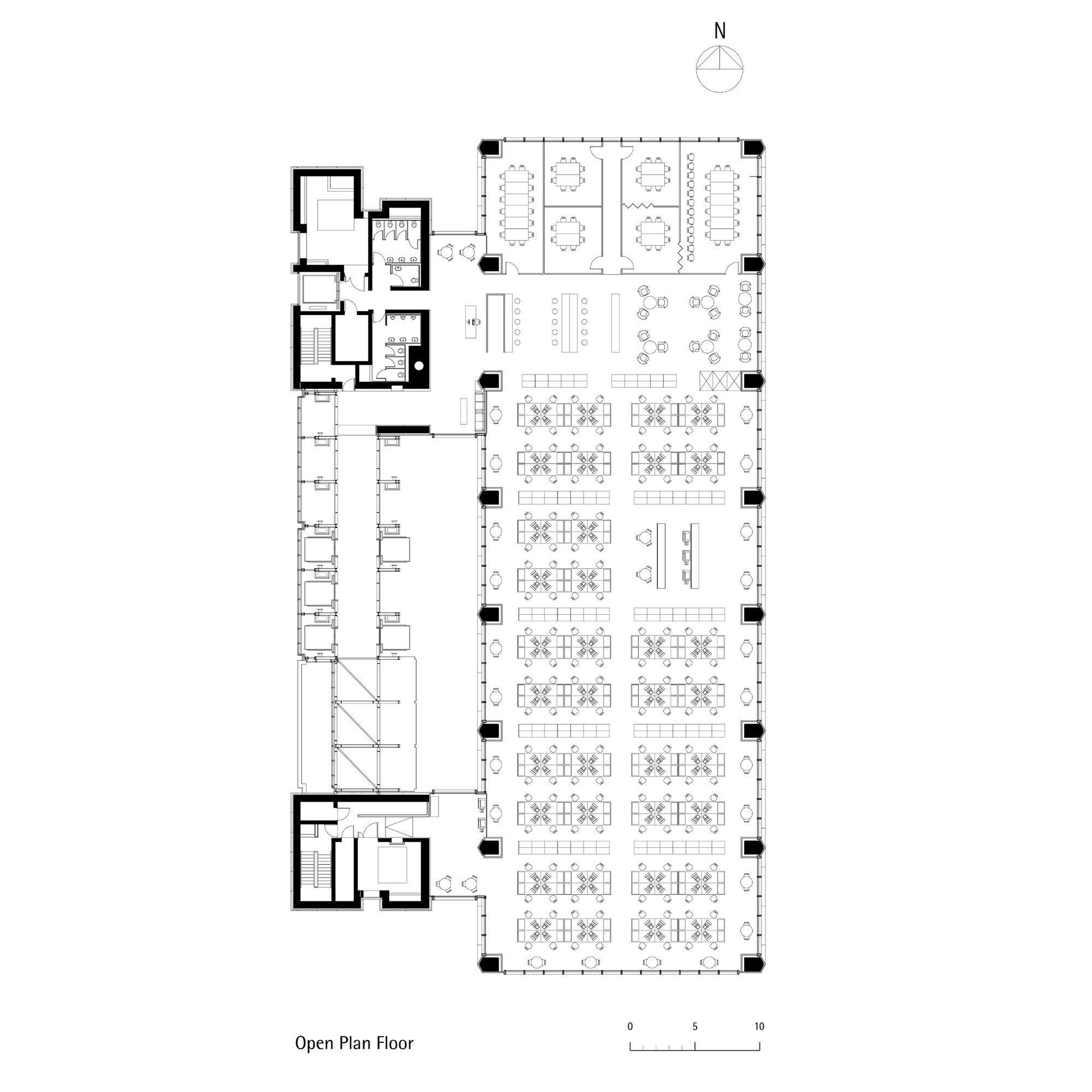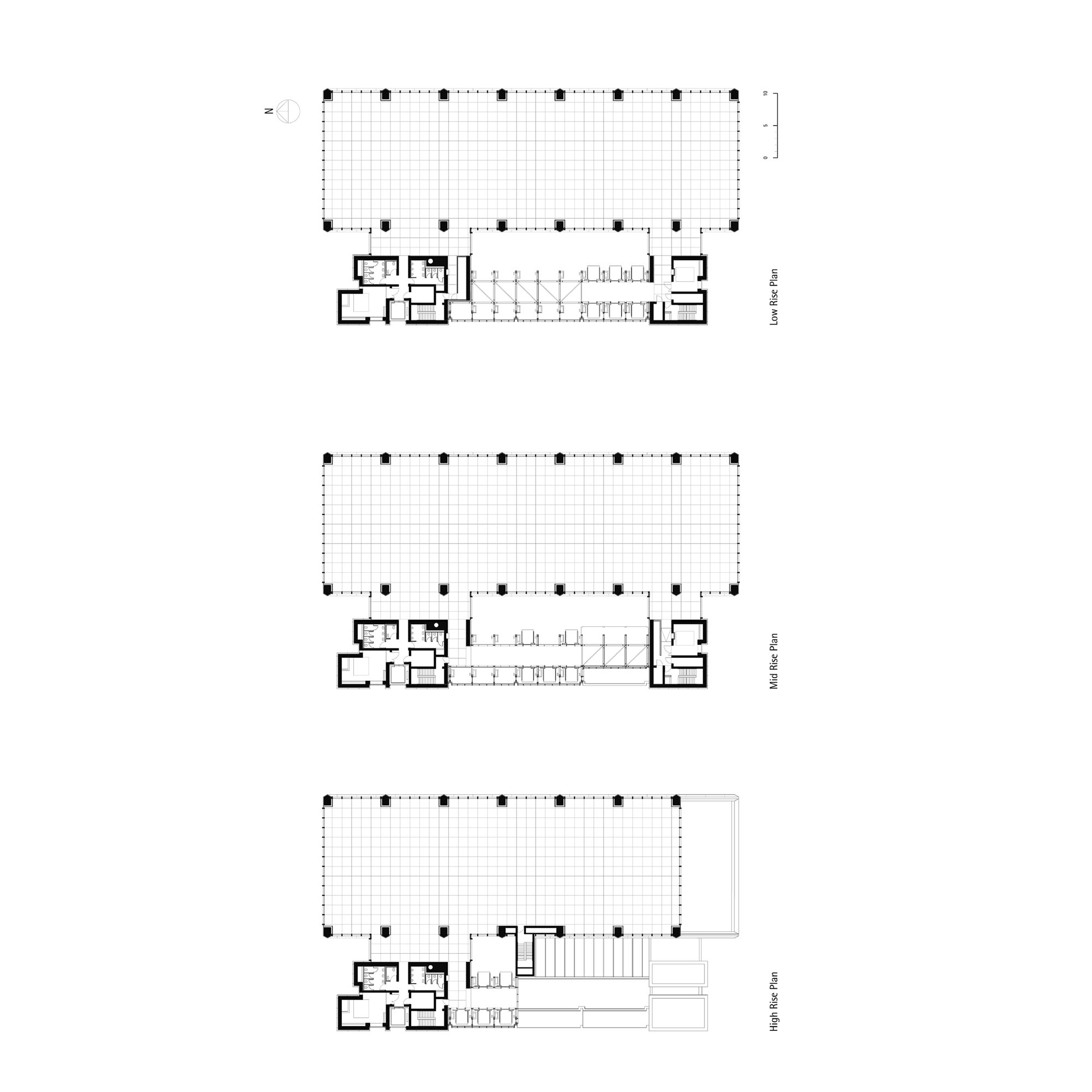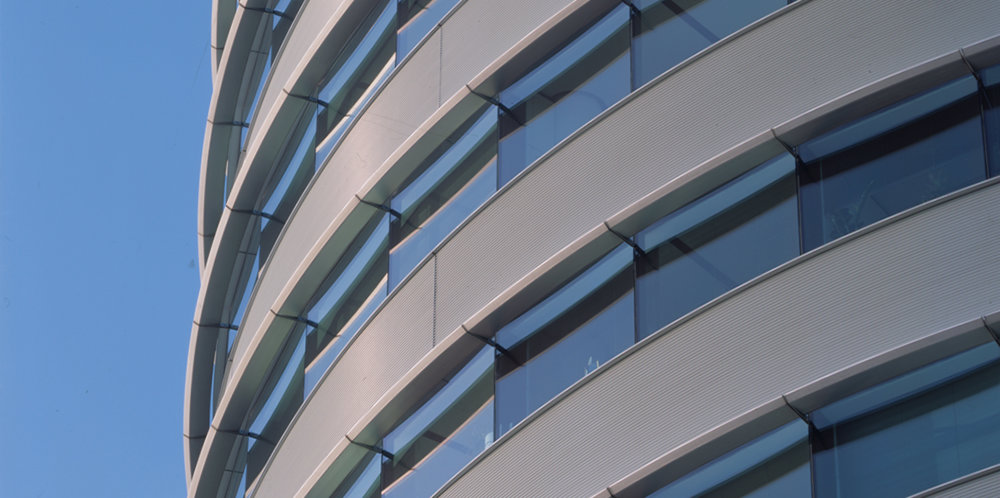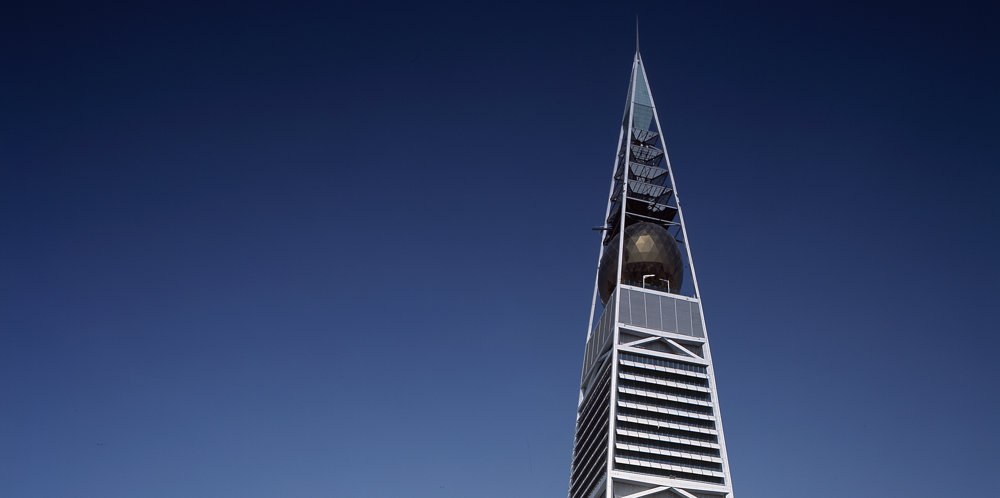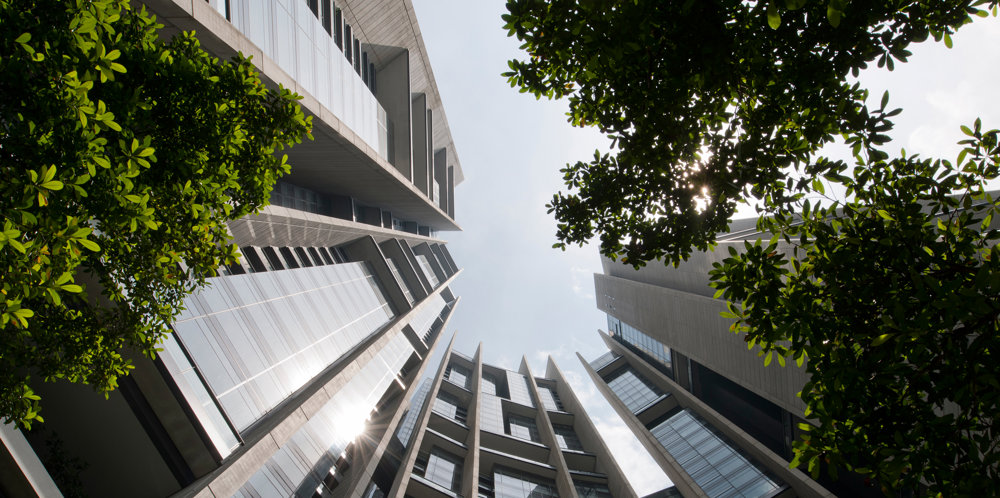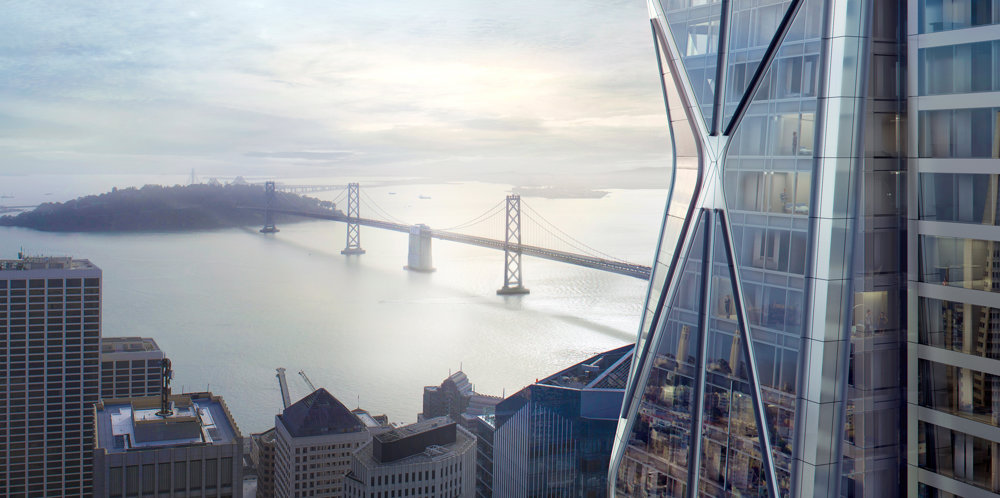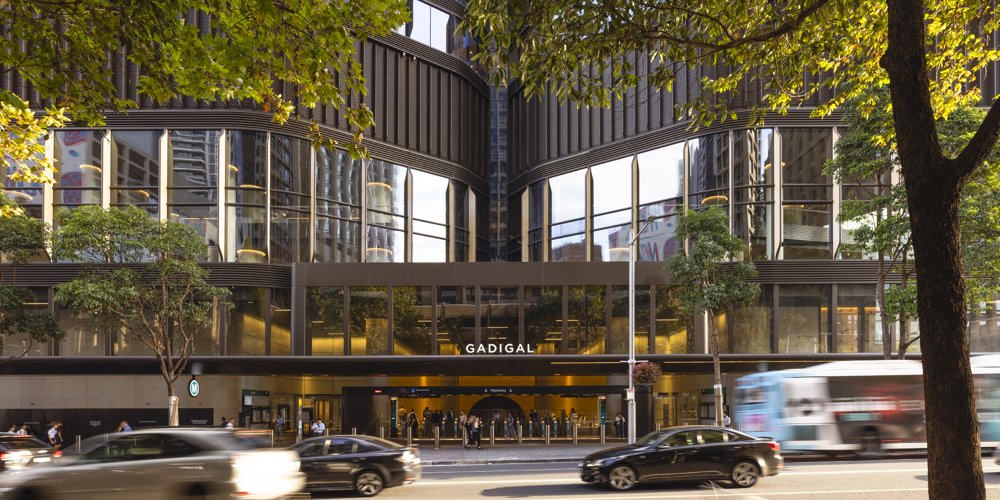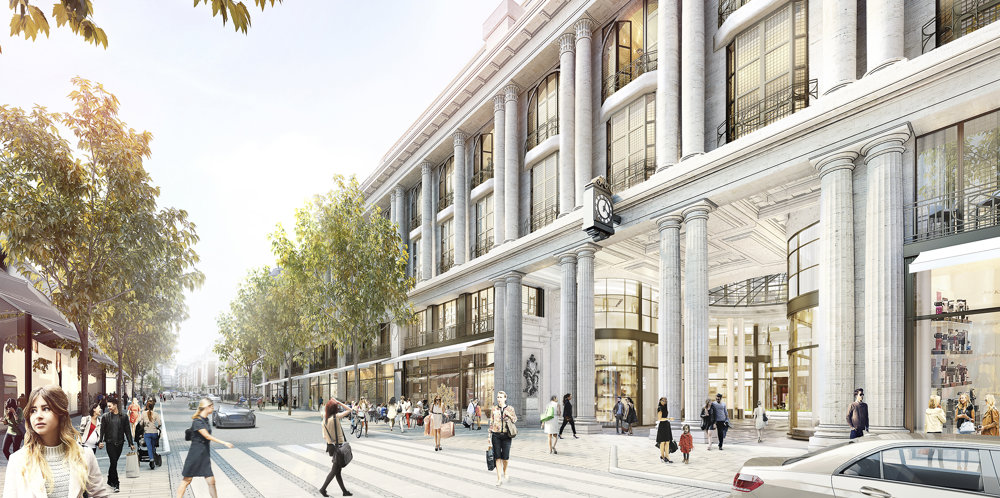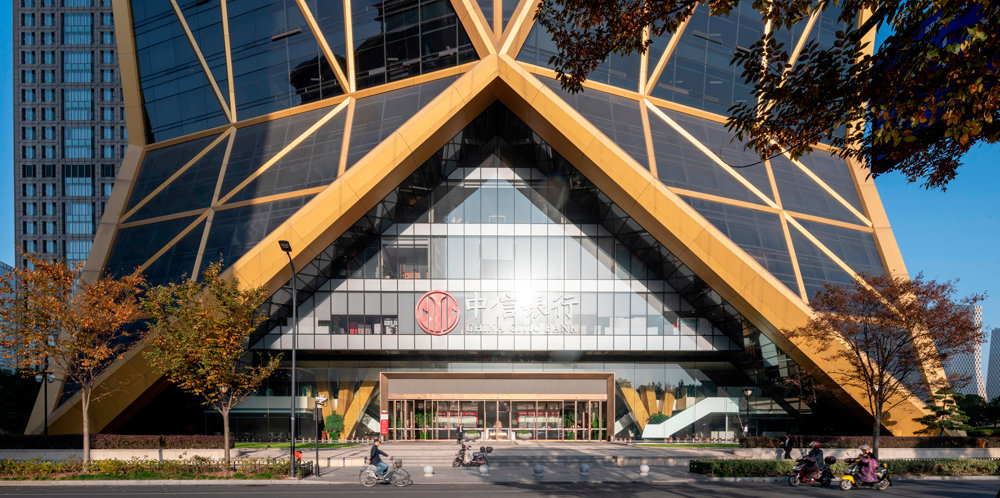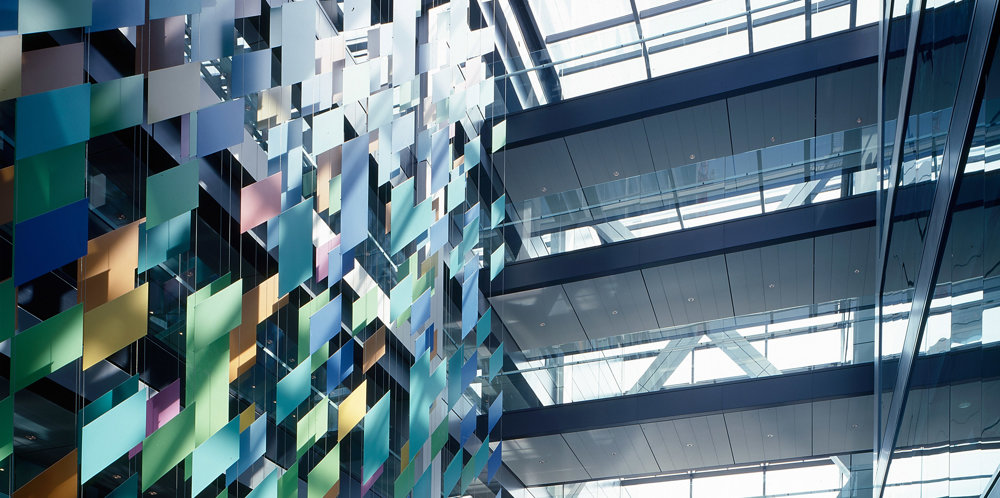Since the design of the Hongkong and Shanghai Bank, the practice has continued to redefine the nature of the office tower and to explore ways in which it can respond to the context and the spirit of the city in which it stands. This thirty-one-storey building, located on a prominent site close to Sydney Harbour, explores new strategies for flexible, column-free office space and creates a new 'urban room' in the city's dense central business district.
The building's unusual design and distinctive profile were guided by number of factors, including the narrow site, the need for large open floor plates, and exacting planning regulations that protected the amount of sunlight falling on two nearby public spaces. The building's orientation exploits a number of environmental factors and maximises views across the Harbour. Daylight is drawn into the office levels and down through the building via an atrium, which runs the full height of the tower between the core and the office floors and is crossed by a series of bridges. Movement through the building is clarified and celebrated, the atrium and lobbies being both physically and psychologically removed from the workplace. The main structural core is offset to the lower, western edge of the site and consists of two towers, which provide the main stiffening elements and act as solar buffers. To permit greater flexibility in planning office layouts, curtain walling on the three glazed facades has been turned 'inside out' with mullions and transoms placed externally.
At ground level, the private world of the tower meets the public realm of the city in a four-storey covered plaza - the 'assembly'. This soaring, light-filled space functions as a busy public square. A prelude to the office lobbies, it also contains shops, cafés and a crèche. The central water feature that runs the length of the space can be controlled to enable all kinds of activities, including fashion shows and parties to take place there at any time of day.



